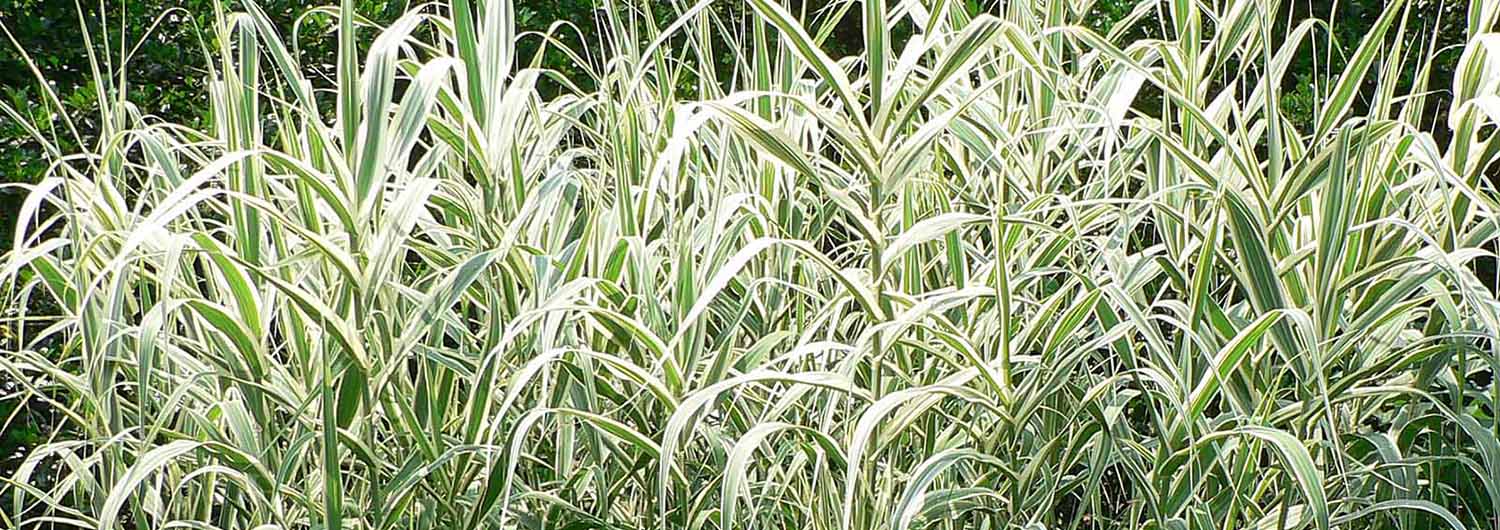Arundo donax 'Peppermint Stick'
white variegated giant reed
Plant breeders and nurserymen keep shrinking plants to get them to fit into our dwindling landscapes but sometimes big is better and bold is beautiful. One plant that certainly fits into this category is the giant reed or Arundo donax.
Arundo donax is native to a wide range from Saudi Arabia across China and Japan to Malaysia. It has also naturalized in Mediterranean and subtropical areas around the world including the southwestern United States. In the eastern United States it has not shown the tendency to spread invasively although it can be a garden thug as the clumps grow ever larger. The species can grow to almost 30', but is more typically around 20' tall. The jointed canes remind many people of bamboo, and although these culms are hollow, it is a distinctly different grass than the bamboos.
While most gardens do not have the space for the species, many people have grown the variegated form known both as 'Versicolor' or 'Variegata'. This form grows somewhat smaller, generally to 15', and clumps a bit slower than the species. It emerges in spring brilliant white and slowly green stripes form eventually becoming solid green by early summer especially in warm climates. While the spring show is spectacular, the quick turn to green makes it ultimately an unsatisfying garden plant. Finally, with the introduction of 'Peppermint Stick', the unfortunate habit of turning green has been kicked.
Arundo donax 'Peppermint Stick' was brought into the United States from the Shanghai Botanic Garden by the late Greg Speichert. This form of giant reed maintains the broad stripes of green throughout even the hottest parts of the summer. It is somewhat more restrained in size, generally only growing to about 10' where it makes a wonderful backdrop for other plants. Purplish-brown plumes appear in late summer. It does not form seed in the eastern United States and as such is not an invasive plant although people sometimes mistake it for Phragmites.
Giant reed is at home in dryland areas as well as permanently damp sites and so is easy to grow in the home landscape. This variegated form is happiest in rich, damp soil, but will tolerate almost any conditions you give it. Cut it to the ground in winter and hire someone with a strong back to divide it every few years unless you have the space for a large clump.

